What is behind this big shift toward income inequality in New York?
Income trends in the city represent an amplified version of our national problems: low-wage jobs without benefits are replacing middle-wage jobs that could support families.
Nationwide, middle-wage jobs constituted 60 percent of the jobs lost during the Great Recession and only 22 percent of those regained during recovery, according to analysis from Roosevelt Institute’s Annette Bernhardt at the National Employment Law Project.
Meanwhile, low-wage jobs made up only 21 percent of recession job losses and 58 percent of jobs gained since.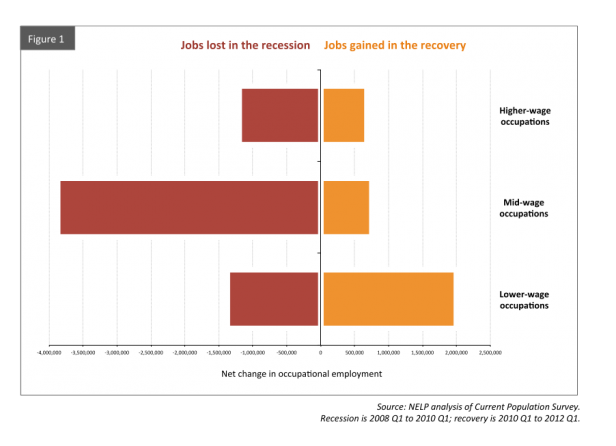 The national trend started well before the Great Recession.
The national trend started well before the Great Recession.
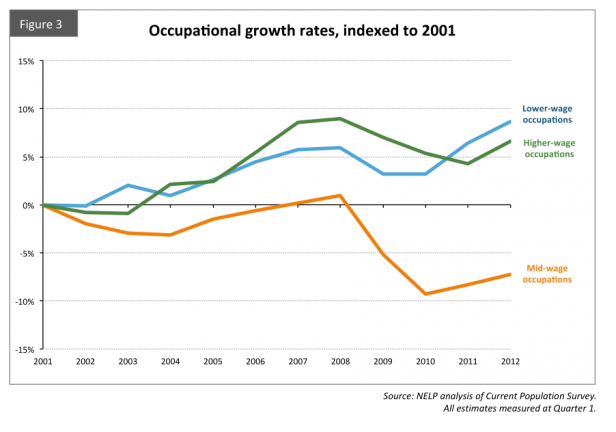 And in New York, it’s been the same, but worse. A 2012 report from the Federal Reserve found that middle-income jobs comprised 67 percent of employment in downstate New York in the 1980s, but by 2010, that number fell to 55.8 percent.
And in New York, it’s been the same, but worse. A 2012 report from the Federal Reserve found that middle-income jobs comprised 67 percent of employment in downstate New York in the 1980s, but by 2010, that number fell to 55.8 percent.
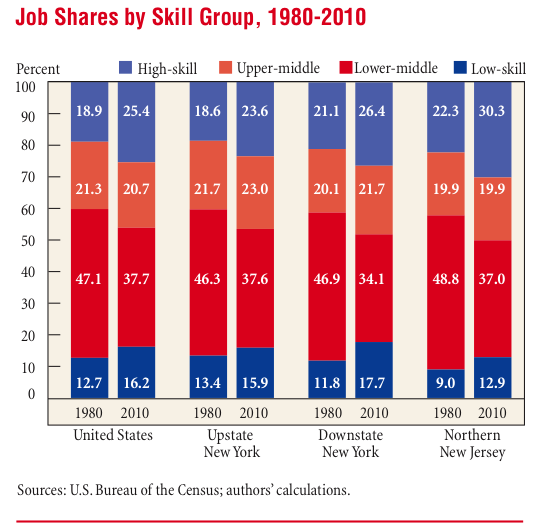
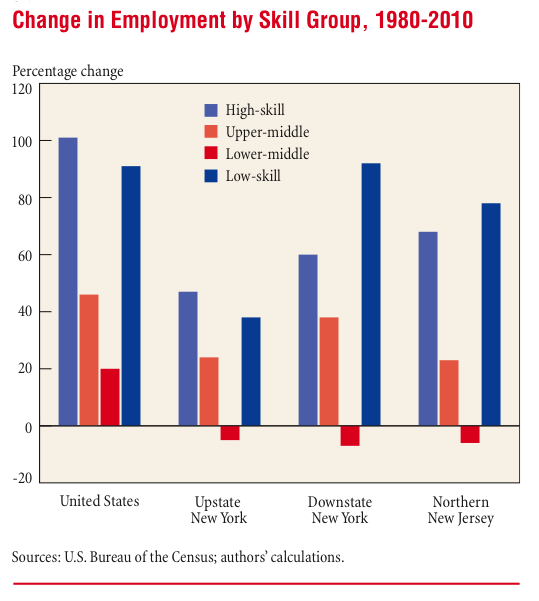
Top that off with the fact that for the last decade, wages have risen for the top 5 percent and stagnated or fallen for middle- and low-income workers, and you begin to see the currents driving our inequality crisis.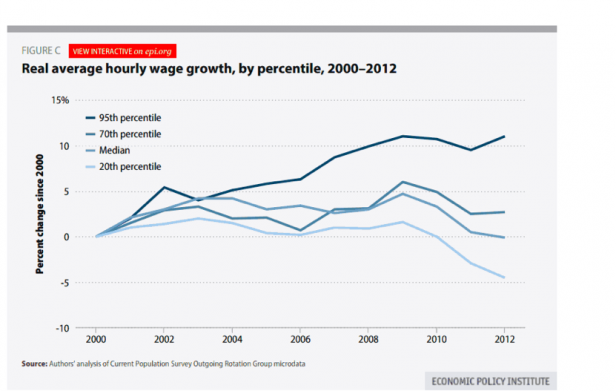
Why is this happening? Technology? Wall Street? Policy? Education?
We’ll explore those questions and potential solutions at our upcoming panel, “Inequality in New York: The Next Mayor’s Challenge.”
Nell Abernathy is the Program Manager for the Roosevelt Institute’s Bernard L. Schwartz Rediscovering Government Initiative. This originally appeared in the Next New Deal.Nell Abernathy

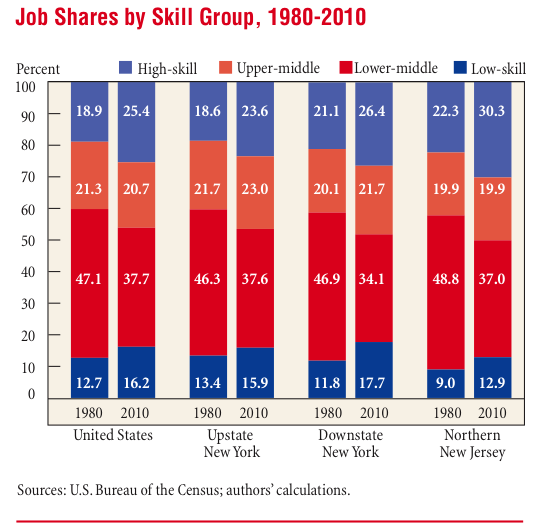





0 Comments